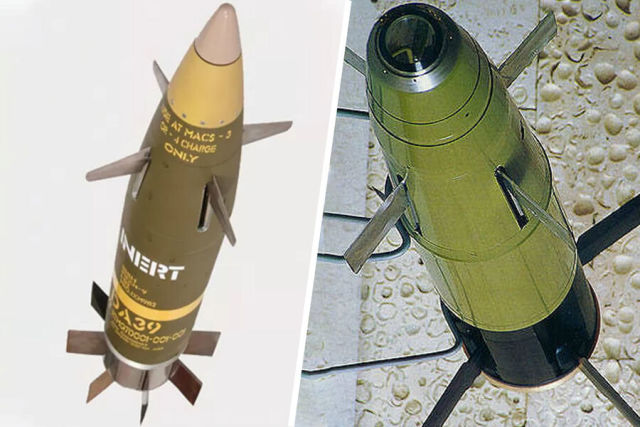Ex-Colonel of the General Staff Khodarenok compared Russian and American guided missiles The US Department of Defense has sent Kiev an extended-range guided artillery shell with GPS guidance M982 Excalibur.
Military observer of the Newspaper.En" Mikhail Khodarenok studied the characteristics of Excalibur and compared it with the Russian Krasnopol projectile and the Daredevil mine.
The M982 Excalibur is a 155-mm guided active-rocket projectile of extended range launched from the barrel of a howitzer.
The M982 correctable munition was developed by Raytheon Missile Systems and BAE Systems Bofors. Currently, it is in service with the ground forces of the US Armed Forces, as well as the armies of a number of NATO countries and other US allies. The M982 control system is combined - satellite and inertial. The firing range of the Excalibur M982 adjustable ammunition (in the Block 1a-2 modification) is 30-40 km.
A similar projectile to the M982 corrected ammunition, consisting of equipping missile troops and artillery of the Armed Forces of the Russian Federation - 152-mm 3OF39 "Krasnopol". It is the main element of the 2K25 guided weapons complex. Its maximum firing range is 30 km.
Krasnopol is designed to defeat armored targets and military facilities from the first shot.
The guided weapons complex includes a 152-mm adjustable high-explosive shell "Krasnopol" (used as part of separate loading shots), with a semi-active laser homing head receiving a reflected signal from a target illuminated by a laser target designator-rangefinder. The complex may include a set of shot synchronization tools and a radio station. Shooting is carried out from 152-mm artillery systems.
In addition, the equipment of the Russian artillery has a guided mine 1K113 "Daredevil" - a set of adjustable weapons for 240-mm mortars M-240 and 2C4.
The 1K113 "Daredevil" complex includes: a 240-mm correctable shot with a high-explosive projectile, a laser designator-rangefinder with synchronization means. The target guidance system uses pulse correction technology in the final section of the projectile flight path. The maximum firing range of the "Daredevil" reaches 15 km.
The fundamental differences between the M982 Excalibur guided projectile and domestic corrected ammunition are that the M982 uses a combined control system - satellite (according to the global positioning system, GPS) and inertial, and the Krasnopoli and Daredevils have a semi-active laser.
In the latter case, this means that the target designators need to get very close to the target of destruction. And this should be done together with a complex of automated fire control (CSM) with a laser target designator-rangefinder, a commander's console and a radio station.
At the same time, the laser rangefinder-designator does not necessarily have to be wearable, it can be installed on helicopters or unmanned aerial vehicles. The experience of hitting enemy targets with the help of target designators is available based on the results of military operations in Syria.
The Excalibur correctable ammunition is not without a significant disadvantage. If the enemy carries out organized interference with the global positioning system, then GPS guidance can encounter serious difficulties. In other words, it is possible to disrupt the execution of the assigned combat mission.
But the most important drawback of all guided projectiles is the price. Their really massive use is extremely difficult. The cost of the M982 Excalibur, according to open data, is $ 100-150 thousand. The cost of "Krasnopol" is approximately equal to $30-35 thousand, "Daredevil" - $ 5-15 thousand.
Thus, Russian guided missiles are cheaper than Western ones.
The opinion of the author may not coincide with the position of the editorial board.Biography of the author:
Mikhail Mikhailovich Khodarenok is a military columnist for the newspaper.
Ru", retired colonel.
He graduated from the Minsk Higher Engineering Anti-Aircraft Missile School (1976), the Military Air Defense Command Academy (1986).
Commander of the S-75 anti-aircraft missile division (1980-1983).
Deputy Commander of the anti-aircraft missile regiment (1986-1988).
Senior Officer of the General Staff of the Air Defense Forces (1988-1992).
Officer of the Main Operational Directorate of the General Staff (1992-2000).
Graduated from the Military Academy of the General Staff of the Armed Forces of Russia (1998).
Columnist of "Nezavisimaya Gazeta" (2000-2003), editor-in-chief of the newspaper "Military-Industrial Courier" (2010-2015).Mikhail Khodarenok

